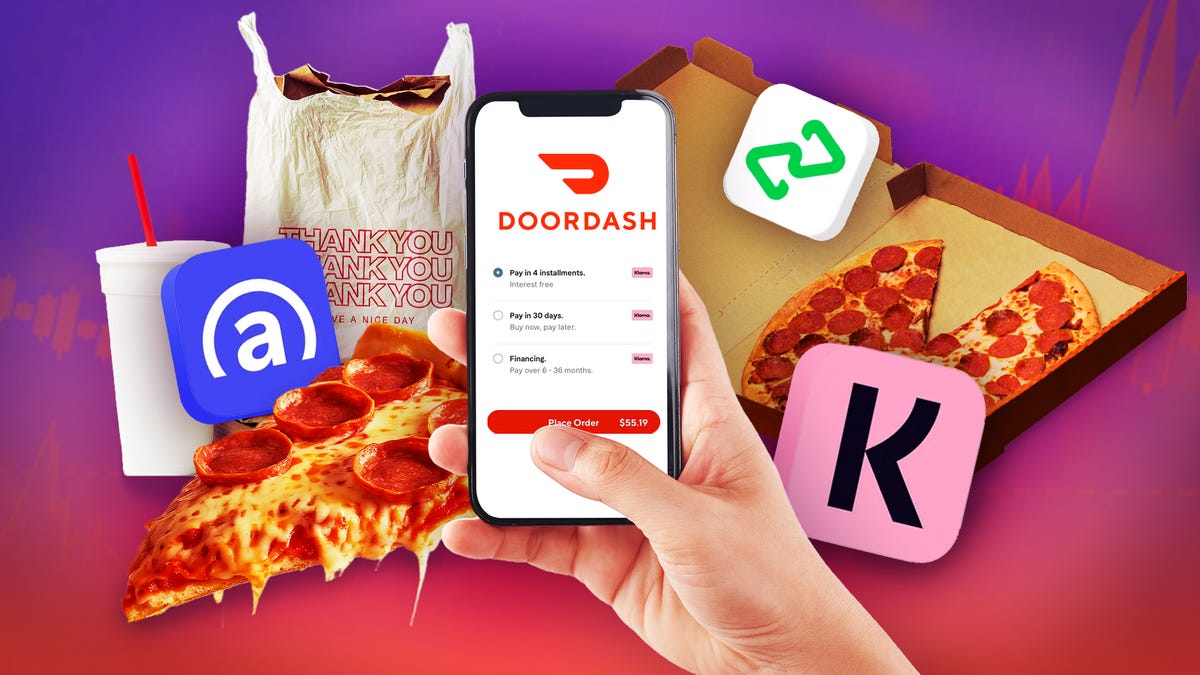I am no doubt the target audience for DoorDash’s new controversial partnership with Klarna. The Buy Now, Pay Later option allows customers to pay for groceries or food delivery on the platform in four installments.
There was a time when taking out a microloan for pad thai would have tempted me. It would have also gotten me into trouble. Ordering food online has always been my go-to guilty pleasure, and cutting takeout from my budget was one of my first personal #recessionindicators.
TAX SOFTWARE DEALS OF THE WEEK
Deals are selected by the CNET Group commerce team, and may be unrelated to this article.
Klarna and other BNPL services might seem like a convenient way to finance things we can’t afford, especially because most of these plans don’t charge interest. But that appeal is precisely why they can be insidious. Being able to pay a small amount now and the rest later makes it easier to hit that “order” button. Humans are excellent at focusing on the here and now and discounting the consequences down the line.
When announced, the DoorDash-Klarna deal got a fair dose of criticism, with online memes deriding “burrito bonds” and “eat now, pay later.”
Critics also rightly saw the short-term loan offering as an indicator of hard economic times and a way to take advantage of folks who are just trying to survive. Historically, installment plans have been marketed as a flexible payment option for expensive items such as appliances and equipment, not for groceries or essentials.
“The more we normalize them, the more dangerous it gets,” said Jen Smith, CNET Money expert review board member and co-author of Buy What You Love.
Here’s what to keep in mind the next time you think of using a BNPL app, whether it’s for a tasty treat or something bigger.
People Are Financing Groceries and Essentials, CNET Survey Finds. How to Cut Costs on Food
BNPL doesn’t always simplify budgeting
BNPL touts itself as a convenient and flexible way for cash-strapped users to simplify money management. But it can cause budgetary strains, especially for households struggling to make ends meet. And that can be even more ominous when there’s a risk of a job-loss recession.
I tried BNPL plans early on, and my biggest slip-up was forgetting to include the payments in my monthly spending plan. I’d think I had extra money to spend in a category, but then an installment would auto-deduct from my account, and suddenly, I’d gone over my budget.
If you’re not paying close attention, future payments can overdraft your account, resulting in late fees or having to put other purchases on credit cards. You could also wind up missing payments altogether. The more you finance, the more installments to keep (or lose) track of, potentially pushing you deeper into the red.
BNPL can be a slippery slope
If there’s something you can’t pay for right now, BNPL can help you get it without incurring credit card interest charges. That can help reduce high-interest debt and credit card balances, right?
Not necessarily. Financial experts warn that BNPL overuse can lead to racking up even more debt. Regardless of how they’re packaged, installment plans give the illusion of being able to afford something we might not actually have sufficient funds to pay off. That’s why BNPL can easily become a trap for anyone living paycheck to paycheck.
Plus, the convenience of a payment plan can stop us from trying cheaper options. For example, DoorDash says it offers more than restaurant delivery — you also can use it with Klarna for necessities like groceries. But it would be less risky to use discount grocery apps Flashfood or Too Good To Go if we can’t afford produce or pantry items.
When we divide a purchase into installments, it also can persuade us to spend more than we intended. Say you’ve budgeted $50 for clothes for your kids, said Smith. BNPL makes it easy to say, “Well, I was going to spend $50, but now I can spend $75 because I can break up the payments.”
BNPL is rarely a good idea
Unfortunately, we have no control over the high cost of living, nor over how much a recession might impact us. I’ve hit rock bottom before, and I know that we often make choices out of financial desperation. Sometimes, they don’t feel like choices at all.
But if you simply have the option to use BNPL to order from your favorite restaurant, I’d advise against it.
Even if you use installment plans cautiously and strategically — i.e., spending only what you can afford to pay off down the line — you might be missing out on other, more beneficial resources.
“If you feel financially deliberate enough to use BNPL responsibly, there are better options for you,” said Smith. For instance, charging something to a travel rewards or cash-back credit card and then paying it off in full could allow you to rack up rewards points you can then use for other purchases. If you’re worried about carrying a balance on your card and accruing debt from interest charges, look into a card with an intro 0% APR.
If your only option is BNPL because you don’t have a credit history or sufficient income, and you don’t qualify for a credit card, try exploring alternatives like secured cards.
The next time I’m craving pad thai, I plan on paying upfront. I might even call the restaurant directly and pick it up myself to avoid delivery fees and other charges. If there’s one thing DoorDash’s new offering has done for me, it’s made me more mindful about how I use it.
Read more on our BNPL coverage
Read the full article here


